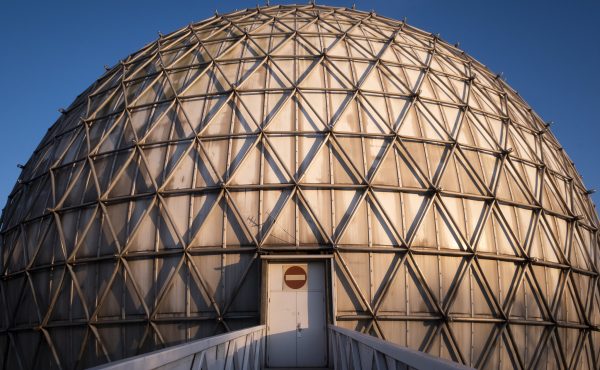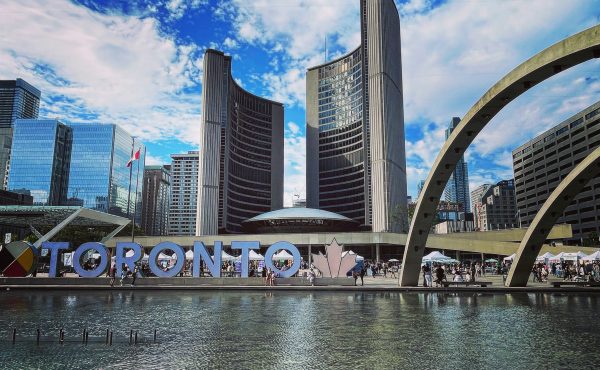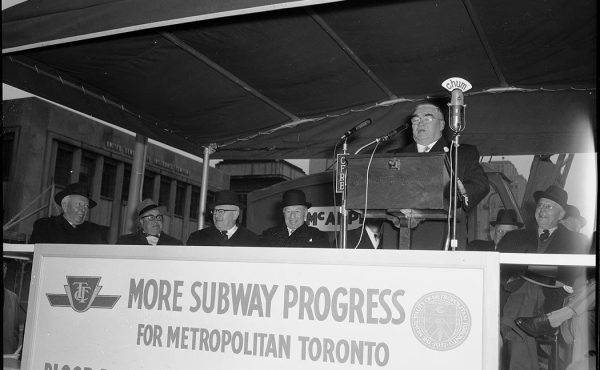
At the press conference last week where the TTC and Metrolinx declared their latest truce, I asked Liberal infrastructure minister Bob Chiarelli whether the province was ragging the puck when it came to revealing the Big Move investment strategy.
For the record, he dismissed the suggestion, but pointed out that when the agency does fulfill its statutory obligation to release its “advice” on how finance GTA transit by next June, the proposals will have to be discussed in every kitchen and at every Tim Horton’s across the land. In other words, don’t expect this dance of the seven veils to end anytime soon.
But he also offered a tiny shard of insight into his government’s thinking on the timing question. The feds, Chiarelli said, have been gathering up feedback on the architecture of a new national infrastructure program, to take the place of the current one, which expires in 2014. Ontario, he noted, had just sent over its submission for the consideration of the honourable minister, blah, blah, blah.
Here is Chiarelli’s submission, loftily entitled, “Building Canada Together: Ontario’s Recommendations for the Federal Long-Term Infrastructure Plan.” As with all such documents, the Ontario government comes across as very keen to spend tax dollars levied by the federal government. As for Queen’s Park’s own contribution, well, the submission is somewhat less than forthcoming.
While Chiarelli’s submission goes on at length about the return on infrastructure investment and the importance of transit for Gridlockville, uh, the GTA, there is just one lonely mention of The Big Move, and not so much as a footnote about the estimated tab ($50 billion over 25 years, but probably a lot more).
The inter-governmental tango over the next generation of federal-provincial infrastructure deals will drag on for at least another year and a half, perhaps longer if Ottawa continues to miss the mark on its deficit reduction projections.
In any event, Chiarelli’s policy guys are almost certainly focusing on how much of the federal infrastructure pie they can snag, and which slice will go to GTA transit. That latter number, in theory, should help ease the sticker shock on the Big Move. So while GTA residents sit in their kitchens and coffee shops ruminating about all the additional taxes they’ll face in order to build new transit, provincial negotiators will be hard at work trying to reduce the province’s financial exposure.
The molten process of finding new revenue serves to foreground the more immediate problem of the sibling rivalry between the TTC and Metrolinx, and whether the current arrangement (two entirely distinct boards reporting to two governments that have a lot of trouble aligning their plans) is one that’s built to last.
Last week’s détente was all about getting the conflict over the LRT outsourcing deals off page one. TTC chair Karen Stintz proved to be a better poker player than I reckoned previously in this space. The province made sure it came out looking reasonable. And both sides claimed to be satisfied with the compromise: private sector consortia will vie for 30-year contracts to design, build and maintain the lines, while the TTC retains full control over scheduling, access to the tracks and other operational issues.
But as the little noted B-side of the press release made clear, the tough negotiations have merely been deferred to another day, not resolved. The TTC and Metrolinx (and the unnamed private partner) have yet to work out big money details such as fare-setting and the quantum of the city’s subsidy to these new lines. These critical elements must be in place by 2020, two years before the lines open.
My question is whether the TTC and Metrolinx are capable of building a stronger working relationship in the interval — one less vulnerable to episodes of mutual suspicion, latent financial rivalry and diverging policy goals.
At the press conference, Stintz, TTC CEO Andy Byford and Metrolinx CEO Bruce McCuaig all took turns stressing how the senior officials of the two organizations were working hand in glove, meeting weekly, etc. The brief, but sharp, exchange of hostilities over the LRT outsourcing deal, they said, was just an honest misunderstanding, something that had been worked through and resolved.
Metrolinx chair Rob Prichard told me he’s satisfied with the current arrangement, and argued that mucking around with the governance of these two agencies won’t solve anything. “Governance is not the central issue; clear choices and excellent execution are the keys. We can make any reasonable governance system work well including the current one, with the commitment of the parties.”
Stintz, however, is less sanguine. She says the Metrolinx board should include municipal representation, as it initially did. And, she adds, the GTA municipalities must make a direct financial contribution to Metrolinx’s projects if they want to be taken seriously as partners in the planning and execution of huge capital projects.
Perhaps paradoxically, they both make solid points. Still, I’d say the two agencies have yet to develop an enduring, institutionalized approach to working out their differences – both at the operational and policy levels — in ways that satisfy their respective governments and offer transparent decision-making to the public.
Now’s the time to do it, incidentally, because the really challenging negotiations – the ones involving money – are still a few years down the road. What’s more, it’s easy to imagine that the Ontario government will ultimately abandon the investment strategy and go back to funding transit projects on a cost-shared one-off basis using federal and municipal contributions.
The next one, almost certainly, will be the Downtown Relief Line – an epic undertaking that will make the Eglinton-Crosstown look like so many pavement patches. One can only hope that by then, Metrolinx and the TTC will have ratified a peace treaty that outlasts political regimes and senior officials. After all, what government wants to throw heaps of money into the middle of a simmering feud?





3 comments
Lets hope that the study for the Downtown Relief Line will indicate that it would or rather should be implemented before any further extension of the Yonge Street Subway.
The elephant in the room is the Provincial deficit and no matter who is in government no one will be making any financial commitments of general revenues until 2017 at the earliest. With growth projections less than forecast, next year’s budget and deficit numbers may be a disaster and the Provincial commitment to Metrolinx may be a problem.
As much as I hate being taxed I personally think 3 things should happen. There should be a 2% sales tax added in the GTHA to cover transit expansion. There should also be a 50 cent toll to use all highways (and an additional 50 cents to the existing 407 tolls) and the 3rd option is to put small parking levy’s at all city parking in the GTHA. Even 25 cents to help cover all the funding. Each year Metrolinx should collect all the money raised between those 3 options and use that money towards funding transit projects. We need more Rapid Transit in the GTHA and we need a regional transit plan.
Take Vancouver for example over the years Vancouver (translink) has expanded the coverage area of the GVA by expanding to Aldergrove and to the Maple Ridge/Pitt Meadows area. Now it is one big company that covers the whole region. I would love seeing DRT, YRT, MiWay, Brampton, Toronto, Oakville, Burlington, HSR, and even Milton all amalgamated with Metrolinx and have transit expanded across municipal boundaries and have just one common fare so people can travel much easier without having to pay more to take TTC. Also have bus routes from DRT, YRT, Brampton and Mississauga make regular stops in the city of Toronto. I would also love to see the Eglinton and Finch west LRT service eventually connect to the Airport and even Humber college where it could connect to another LRT going west.
Politicians need to think of creative ways to raise money so that we can build more transit. Transit in the GTA is mediocre at best and in some cases I have even heard comparisons to transit in other parts of the world such as India being better then here. Not sure if that is true but even still we need to focus on building more transit and doing things to make people want to leave the car at home.